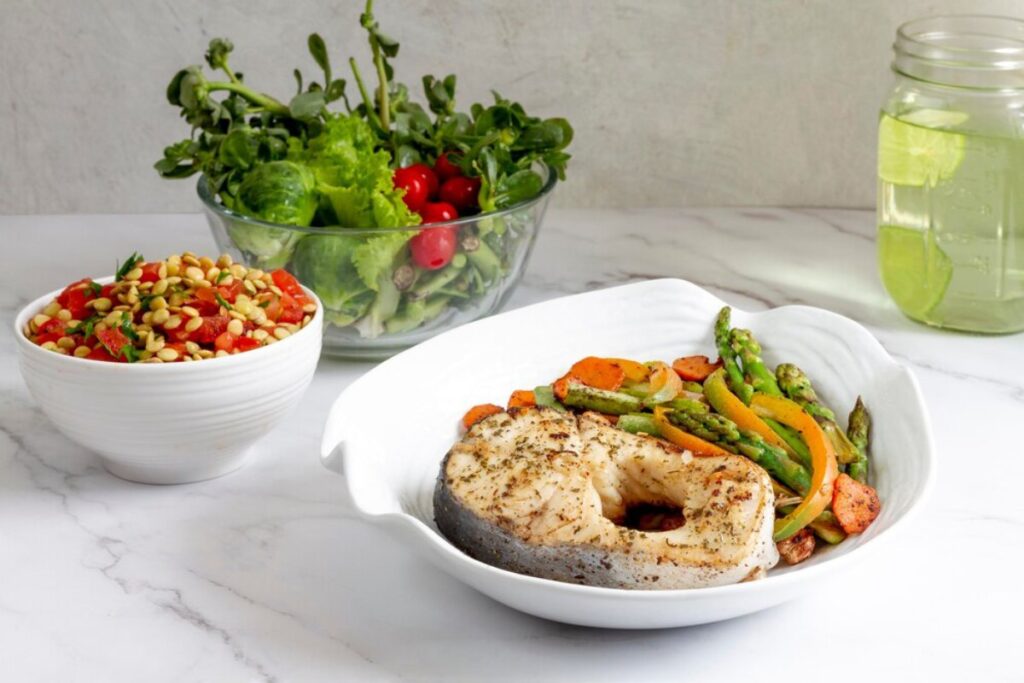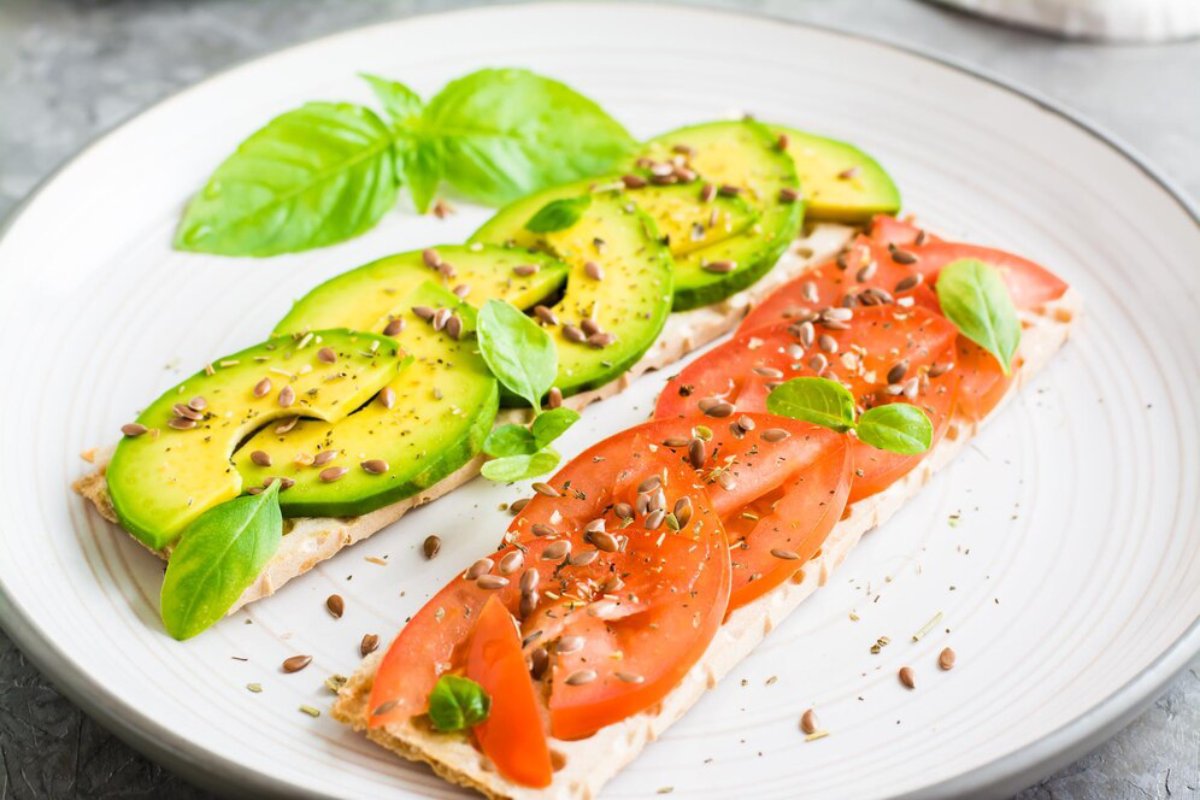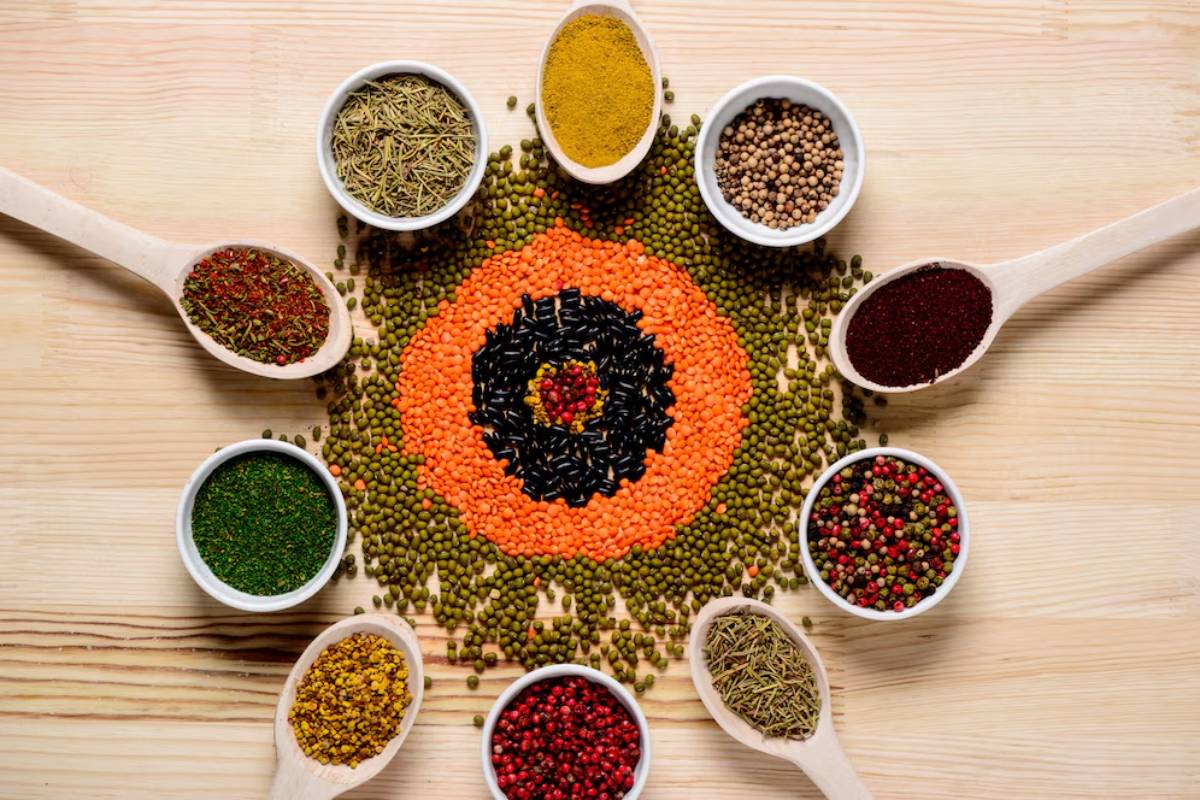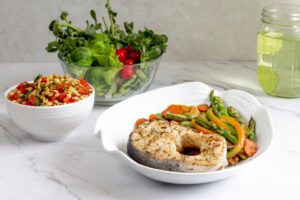The Health & Wellness Blog

Lunch Ideas for an Anti-Inflammatory Diet
Lunch frequently slips through the cracks. We have back-to-back meetings, errands, and school pickups. Hence, we tend to skip meals or have quick, processed appetisers. What you have for lunch can have a major impact on how you feel later in the day. It also affects how your body processes inflammation.
Anti-inflammatory lunches need no rules, nor much cost. They focus on executing intelligent decisions. It nourishes your body, soothes and lowers stress and aids digestion. An even lunch can make you feel energised, focused and comfortable all afternoon.
Why Anti-Inflammatory Lunches Matter
The inflammation is a response of the body to injury or infection. But when it sticks around too long, it can lead to exhaustion, joint pain and digestive issues. It can also contribute to serious problems, such as arthritis, heart disease, and diabetes. Diet is generally the most effective means of controlling it, but most people never learn this. Medicines and supplements can also offer relief.
Your lunchtime meal can soothe or stoke inflammation, depending on what’s on your plate. Steer clear of processed foods, fried foods and sugar. Instead, choose anti-inflammatory staples. These include leafy greens, whole grains, legumes, and omega-3-rich fats.
Key Benefits of Anti-Inflammatory Midday Meals
1. Sustained Energy and Focus
A balanced lunch with protein, fibre, and healthy fats helps avoid the afternoon slump. It keeps your mind sharp and your energy steady.

2. Improved Digestion
Fibre-rich lunches support gut health, which is closely tied to inflammation. A healthy gut equals a calmer immune response.
3. Blood Sugar Control
Whole, slow-digesting foods help keep blood sugar steady. This prevents spikes and crashes that can trigger inflammation.
4. Support for Joint and Muscle Health
Foods rich in omega-3s, antioxidants, and minerals can help reduce joint stiffness and muscle pain. This is especially useful for people with arthritis or those who lead active lives.
5 Easy and Nourishing Anti-Inflammatory Lunch Ideas
1. Quinoa Chickpea Bowl with Lemon Tahini Dressing
Ingredients:
- ½ cup cooked quinoa
- ½ cup canned chickpeas, rinsed
- 1 cup chopped cucumbers, cherry tomatoes, and spinach
- 2 tbsp hummus or tahini
- Juice of ½ lemon
- Pinch of cumin and sea salt
Why it works: Quinoa and chickpeas provide plant-based protein and fibre.

2. Grilled Salmon Wrap with Avocado and Greens
Ingredients:
- 1 small grilled salmon fillet
- 1 whole grain or gluten-free wrap
- ½ avocado, sliced
- A handful of arugula or baby kale
- Dijon mustard or plain Greek yoghurt for the spread
Why it works: Salmon is rich in omega-3 fatty acids, one of the most potent inflammation fighters. Avocado adds fibre and heart-healthy fats.
3. Sweet Potato and Black Bean Power Bowl
Ingredients:
- 1 small roasted sweet potato, cubed
- ½ cup black beans
- ½ cup cooked brown rice or cauliflower rice
- Sautéed bell peppers and onions
- Fresh cilantro and lime juice
Why it works: Sweet potatoes and black beans offer complex carbs and fibre. Black beans are a fantastic source of plant protein. They also have polyphenols that help fight inflammation.
4. Zucchini Noodles with Pesto and Cherry Tomatoes
Ingredients:
- 1–2 cups spiralised zucchini
- ¼ cup cherry tomatoes, halved
- 2 tbsp homemade or store-bought pesto (with olive oil and no added sugar)
- Optional: grilled tofu or chicken
Why it works: Zoodles are low-carb and easy on digestion. Pesto with olive oil, garlic, and fresh basil has anti-inflammatory compounds and healthy fats.
5. Lentil and Vegetable Soup with Whole Grain Toast
Ingredients:
- 1 cup cooked lentils
- Carrots, celery, spinach, and zucchini
- Garlic, turmeric, black pepper, and vegetable broth
- Side of sprouted or whole-grain toast
Why it works: Lentils are rich in fibre, protein, and iron. The soup format is easy on digestion, and warming spices like turmeric offer a natural anti-inflammatory boost.
Common Pitfalls to Avoid at Lunch
Mistake #1: Skipping Lunch Altogether
Missing your midday meal can lead to blood sugar dips and overeating later in the day. Consistent meals help maintain hormonal balance and reduce cravings.
Mistake #2: Relying on Store-Bought “Healthy” Options
Pre-packaged salads or wraps might seem healthy but often contain inflammatory oils, preservatives, and sugars. Always read labels or prepare your own when possible.
Mistake #3: Overloading on Refined Carbs
White bread, pasta, and fried snacks cause rapid blood sugar spikes, which can trigger inflammation. Choose whole grains, legumes, or veggies as your carb source.
Expert Tips to Elevate Your Anti-Inflammatory Lunch Game
Plan Ahead
Batch cooking grains, proteins, and veggies at the start of the week makes assembling lunch a breeze. Think quinoa, lentils, roasted vegetables, and a few homemade sauces.

Add Herbs and Spices
Turmeric, ginger, rosemary, and garlic aren’t just flavorful—they actively reduce inflammation. Include them in soups, dressings, or marinades.
Include Fermented Foods
Kimchi, sauerkraut, or a dollop of plain yogurt support gut health, which directly influences your immune and inflammatory responses.
Don’t Forget the Fats
Olive oil, avocado, nuts, and seeds help you absorb fat-soluble vitamins and promote satiety, all while fighting inflammation.
Advanced Insights: What Nutrition Science Says
The Role of Polyphenols
Polyphenols are plant compounds found in berries, olive oil, dark leafy greens, and spices. They act as antioxidants and actively reduce markers of chronic inflammation.
Omega-3s vs. Omega-6s
While omega-3 fatty acids (from salmon, flaxseed, walnuts) reduce inflammation, many processed foods are high in omega-6 fats, which can be pro-inflammatory in excess. The key is balance. Your lunch should lean more heavily on omega-3 sources.
Personalised Nutrition is Key
What works as an anti-inflammatory lunch for one person might not work for another, especially when food sensitivities are involved. Pay attention to how certain ingredients make you feel and adjust accordingly.
Make Lunch Work for Your Body
Lunch doesn’t have to be fancy or take too long to prepare. By choosing whole foods for lunch, we can lower inflammation, increase energy, and promote long-term health.
From quinoa bowls and lentil soups to veggie-packed wraps, the possibilities are anything but boring. Make it colourful, balanced and satisfying — your body will appreciate it.









